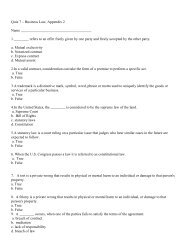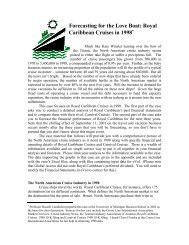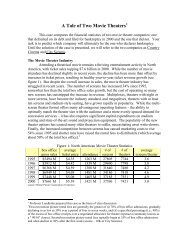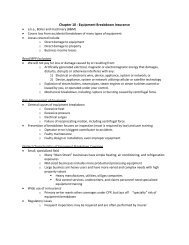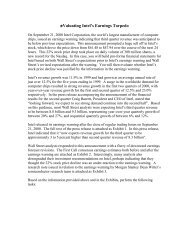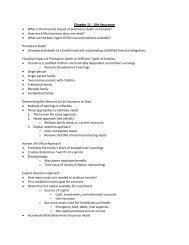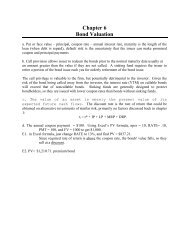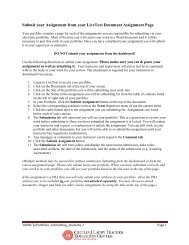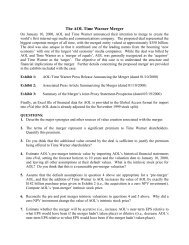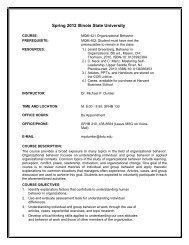Evaluating a Firm's External Environment - Illinois State University
Evaluating a Firm's External Environment - Illinois State University
Evaluating a Firm's External Environment - Illinois State University
You also want an ePaper? Increase the reach of your titles
YUMPU automatically turns print PDFs into web optimized ePapers that Google loves.
M02_BARN4586_03_SE_C02.qxd 7/1/09 7:34 AM Page 47<br />
Chapter 2: <strong>Evaluating</strong> a Firm’s <strong>External</strong> <strong>Environment</strong> 47<br />
Third, buyers are likely to be more of a threat when the supplies they purchase<br />
are a significant portion of the costs of their final products. In this context,<br />
buyers are likely to be very concerned about the costs of their supplies and constantly<br />
on the lookout for cheaper alternatives. For example, in the canned food<br />
industry, the cost of the can itself can constitute up to 40 percent of a product’s<br />
final price. Not surprisingly, firms such as Campbell Soup Company are very concerned<br />
about keeping the price of the cans they purchase as low as possible. 35<br />
Fourth, buyers are likely to be more of a threat when they are not earning significant<br />
economic profits. In these circumstances, buyers are likely to be very sensitive<br />
to costs and insist on the lowest possible cost and the highest possible quality<br />
from suppliers. This effect can be exacerbated when the profits suppliers earn<br />
are greater than the profits buyers earn. In this setting, a buyer would have a<br />
strong incentive to enter into its supplier’s business to capture some of the economic<br />
profits being earned by the supplier. This strategy of backward vertical<br />
integration is discussed in more detail in Chapter 6.<br />
Finally, buyers are more of a threat to firms in an industry when they have<br />
the ability to vertically integrate backward. In this case, buyers become both buyers<br />
and rivals and lock in a certain percentage of an industry’s sales. The extent to<br />
which buyers represent a threat to vertically integrate, in turn, depends on the<br />
barriers to entry that are not in place in an industry. If there are significant barriers<br />
to entry, buyers may not be able to engage in backward vertical integration, and<br />
their threat to firms is reduced.<br />
The Five Forces Model and Average Industry Performance<br />
The five forces model has three important implications for managers seeking to<br />
choose and implement strategies. First, this model describes the most common<br />
sources of local environmental threat in industries. These are the threat of entry,<br />
the threat of rivalry, the threat of substitutes, the threat of suppliers, and the threat<br />
of buyers. Second, this model can be used to characterize the overall level of threat<br />
in an industry. Finally, because the overall level of threat in an industry is, according<br />
to S-C-P logic, related to the average level of performance of a firm in an<br />
industry, the five forces model can also be used to anticipate the average level of<br />
performance of firms in an industry.<br />
Of course, it will rarely be the case that all five forces in an industry will be<br />
equally threatening at the same time. This can sometimes complicate the anticipation<br />
of the average level of firm performance in an industry. Consider, for example,<br />
the four industries in Table 2.6. It is easy to anticipate the average level of performance<br />
of firms in the first two industries: In Industry I, this performance will be<br />
Industry I Industry II Industry III Industry IV<br />
Threat of entry High Low High Low<br />
Threat of rivalry High Low Low High<br />
Threat of substitutes High Low High Low<br />
Threat of powerful suppliers High Low Low High<br />
Threat of powerful buyers High Low High Low<br />
Expected average firm<br />
performance<br />
Low High Mixed Mixed<br />
TABLE 2.6 Estimating the<br />
Level of Average Performance in<br />
an Industry



